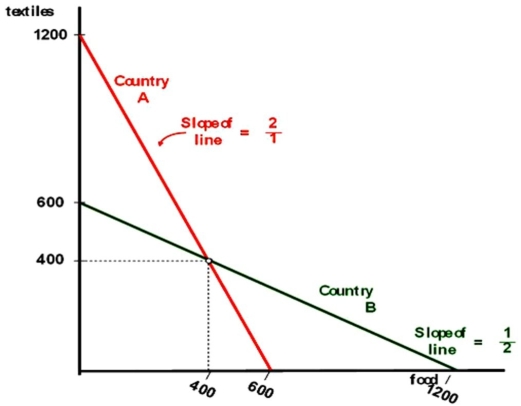Multiple Choice
Countries A and B currently consume 400 units of food and 400 units of textiles each and currently do not trade with one another.The citizens of country A have to give up one unit of food to gain two units of textiles,while the citizens of country B have to give up one unit of textiles to gain two units of food.Their production possibilities curves are shown.  Suppose that trade is allowed and that the international exchange rate between food and textiles is one-for-one.The increased consumption following trade will be
Suppose that trade is allowed and that the international exchange rate between food and textiles is one-for-one.The increased consumption following trade will be
A) an increase of 400 units of food and 400 units of textiles.
B) an increase of 1,200 units of food and 1,200 units of textiles.
C) an increase of 800 units of food and 800 units of textiles.
D) there are no gains from trade in this example.
Correct Answer:

Verified
Correct Answer:
Verified
Q51: The common monetary policy for the euro
Q52: The first two columns give the
Q53: The Nestlé Corporation,a well-known Swiss MNC,used to
Q54: Suppose that Northern Ireland and Southern Ireland
Q55: A multinational firm can be defined as
Q57: Consider the no-trade input/output situation presented in
Q58: The ultimate guardians of shareholder interest in
Q59: An example of a political risk is<br>A)expropriation
Q60: A country like North Korea<br>A)likely rejects the
Q61: For case II,let the international price